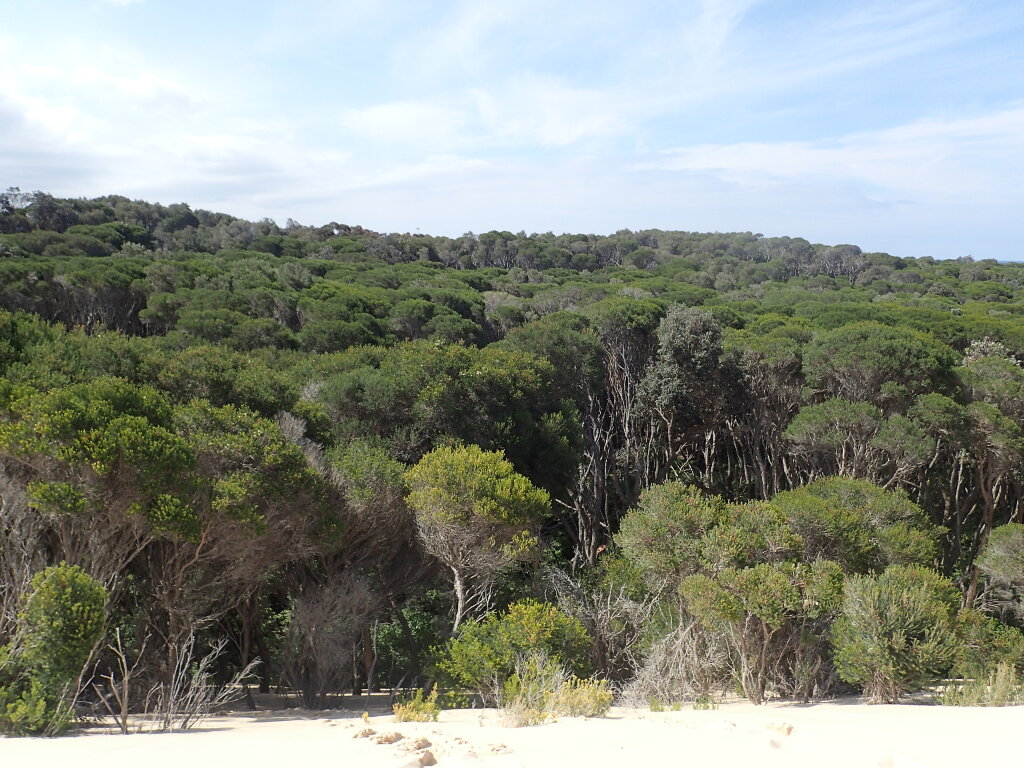Melaleuca armillaris subsp. armillaris
Giant Honey-myrtleSpreading shrub or small tree, to c. 6 m high; bark hard, shallowly fissured, occasionally corky. Leaves alternate, linear, 1.2–2.5 cm long, c. 1 mm wide, concave above, gland-dotted below, tip narrowly acute, recurved; petiole 1–2 mm long. Inflorescence a dense spike, 3–7 cm long, 2.0–2.8 cm wide, arising as a side branch; axis glabrous to hairy, growing on into a leafy shoot. Flowers subtended by a caducous bract which is nearly as long as the leaves and has a leaf-like tip; stamens 13–18 per bundle, cream to white or rarely pinkish-mauve, claw 5–6 mm long, free part of filaments c. 3–7 mm long. Capsules 3–5 mm wide, sepals mostly persistent, pointed to undulate on the capsule rim. Flowers summer.
LoM, Wim, GleP, VVP, VRiv, RobP, GipP, OtP, WaP, Gold, CVU, GGr, DunT, NIS, EGL, EGU, WPro, HSF, HNF, OtR, Strz. Also WA (naturalised), SA (naturalised), NSW (native), ACT (naturalised), Tas (native and naturalised). Mainly confined to near-coastal sandy heaths, scrubs slightly raised above saltmarsh, riparian scrubs, rocky coastlines and foothill outcrops eastwards from about Marlo. Occurrences to the west are naturalized from cultivated stock.
Commonly grown for ornament, as a windbreak or street tree and sometimes giving rise to seedlings, particularly after fire. Willis (1947) reports plants of Melaleuca armillaris to 15 m tall on Rodondo Is. (c. 10 km south of Wilsons Promontory).
Spencer, R.D. (1996). Melaleuca. In: Walsh, N.G.; Entwisle, T.J., Flora of Victoria Vol. 3, Dicotyledons Winteraceae to Myrtaceae, pp. 1027–1034. Inkata Press, Melbourne.
 Spinning
Spinning

